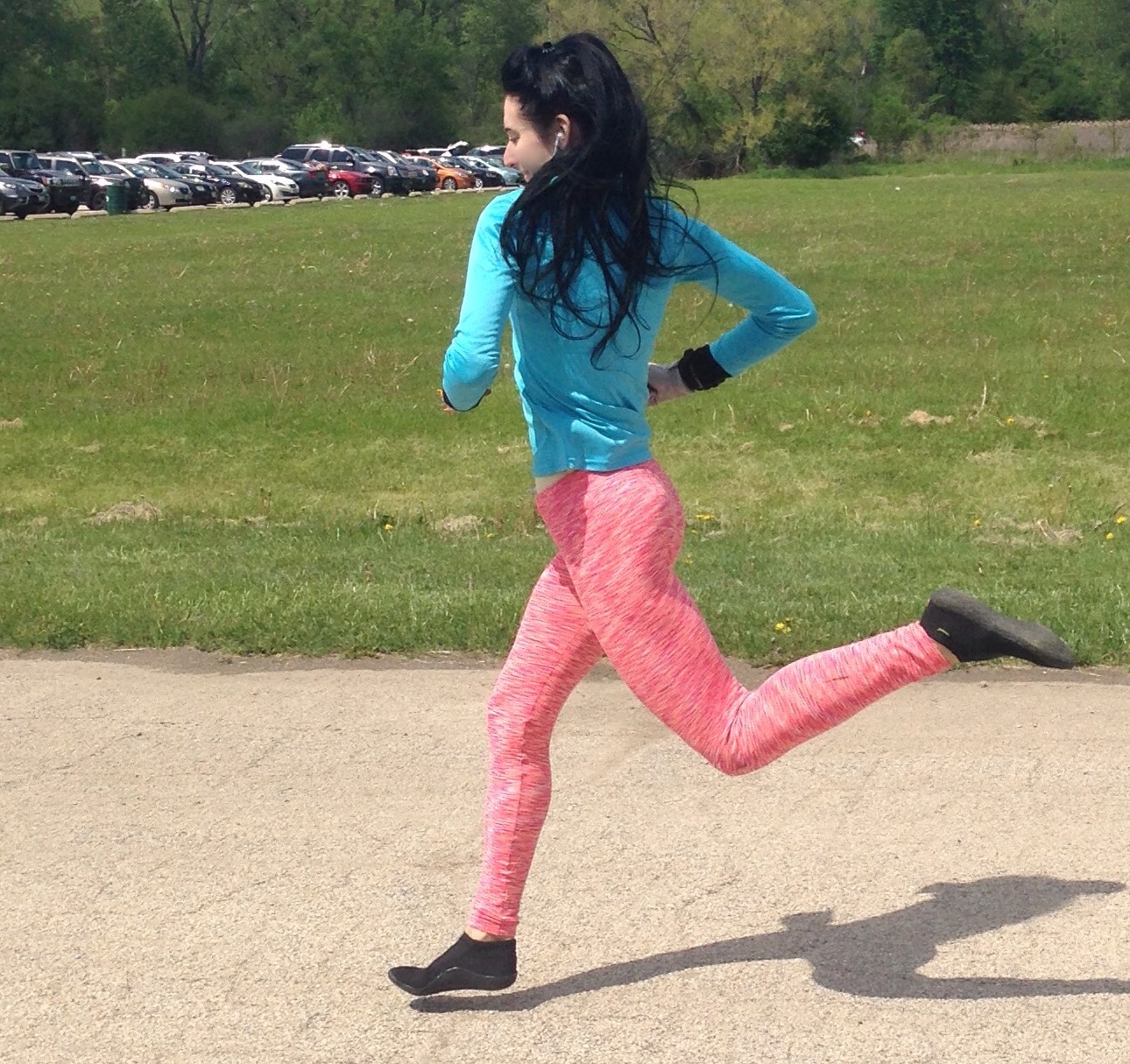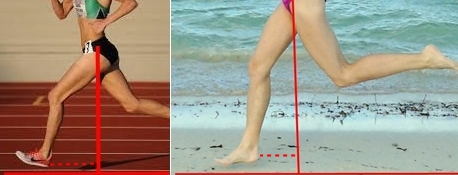In forefoot running, as long as you land on your forefoot with your knee bent, you are good to go, but there are additional tips to consider when it comes to how you should swing your legs. If forefoot running seems tiring for you, you may need to re-evaluate your leg swing mechanics. So, here are some handy leg swing tips I learned from Pose Running.

Most runners have no idea how to swing their legs when running. We tend to reach out in front of our body with our leg when we run, but how does this affect the quality of our performance? Over-reaching in front of you with your leg may cause you to over-stride (ankle lands a head of the knee), which reduces your step rate (foot spends more time on the ground than in the air), which in turn, can double the production of impact on the body.
Proper Leg Swing in Forefoot Running

Ideally, you want to reach out less and kick up more with your leg in forefoot running. This allows most of the leg swing action to occur behind the body, not in front as in heel strike running. If you run with a higher back kick, you will suddenly develop faster speed, have more energy to run longer and faster and your foot strike will feel lighter.
The video above is another example of how forefoot running involves less front action of the leg and more back action which helps reduce braking and keeps the system moving forward smoothly. To train yourself to do this, you need to change your focus of where you swing your legs. Focus on kicking your feet higher up behind you, never stretch out your leg far in front of you.
No Heel Strike Leg Swing
You have to learn to break the habit of swinging your leg like a heel striker. In heel strike running, more leg action occurs in front of the body, similar to walking. Taking long steps like this uses more muscle force generation to pull the entire body forward.
Many forefoot runners who have switched from heel strike running retain their heel strike-leg swing habits. Another reason for this is because they are not leaning forward when forefoot running. The forward lean is what keeps the system moving smoothly forward. In comparison, heel strike runners run more upright with their trunk. To take some of the leg-work out of running, be sure to slightly lean forward when you run forefoot.
Recap
- To prevent over-striding and braking, avoid reaching out with your leg to initiate the next step.
- Lean forward more, keeping your torso ‘in front’.
- Use your legs to stop you from falling instead of using them for all the propulsion. This should allow the foot to drop and land closer to your hips. The less time the leg spends in front of the body, leaves more time for a higher back-kick.
More From Run Forefoot:
- Best Shoes for Forefoot Running
- Aside From Feeling Incredible, Here are More Reasons to Run Barefoot
- How Much Strength Training Should You Do For Forefoot Running?
- The Cause of Plantar Fasciitis When Running
References:
Romanov, N. Pose Method of Running. Pose Tech Corp. 2002.
Bretta Riches
BSc Neurobiology; MSc Biomechanics candidate, ultra minimalist runner & founder of RunForefoot. I was a heel striker, always injured. I was inspired by the great Tirunesh Dibaba to try forefoot running. Now, I'm injury free. This is why I launched Run Forefoot, to advocate the health & performance benefits of forefoot running and to raise awareness on the dangers of heel striking, because the world needs to know.
Latest posts by Bretta Riches (see all)
- Does Foot Strike Really Matter in Running? YES! - 17/04/2024
- Heel Lifts Increase Injury in Runners - 16/04/2024
- Are Minimalist Shoes Good for Seniors? YES! - 14/04/2024

Leave a Reply